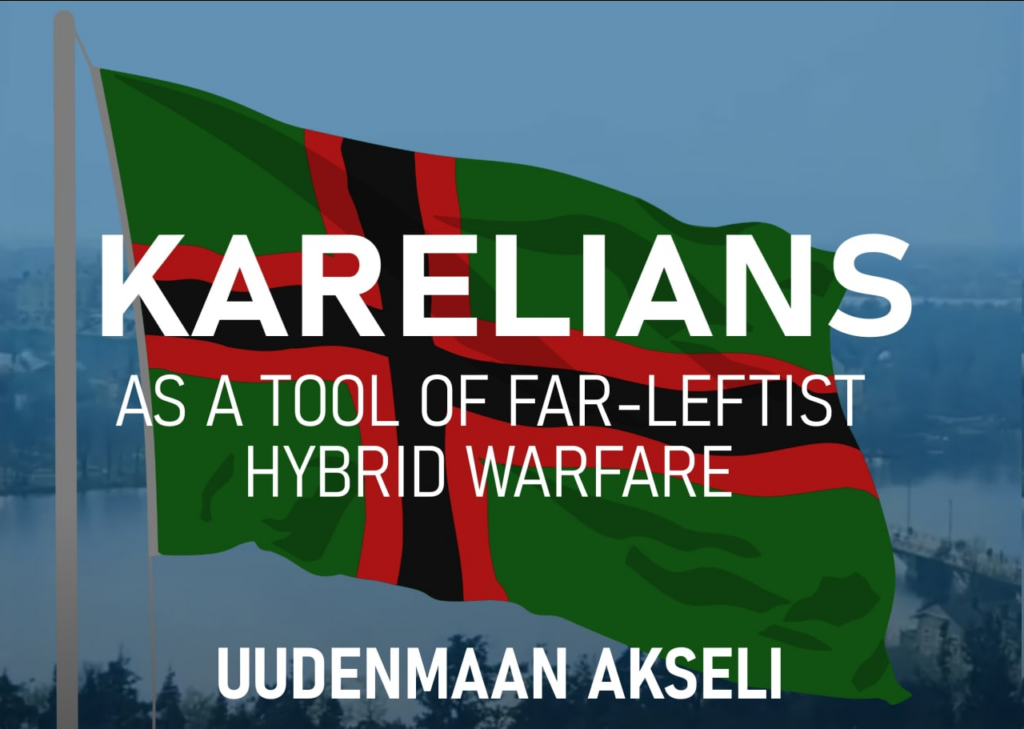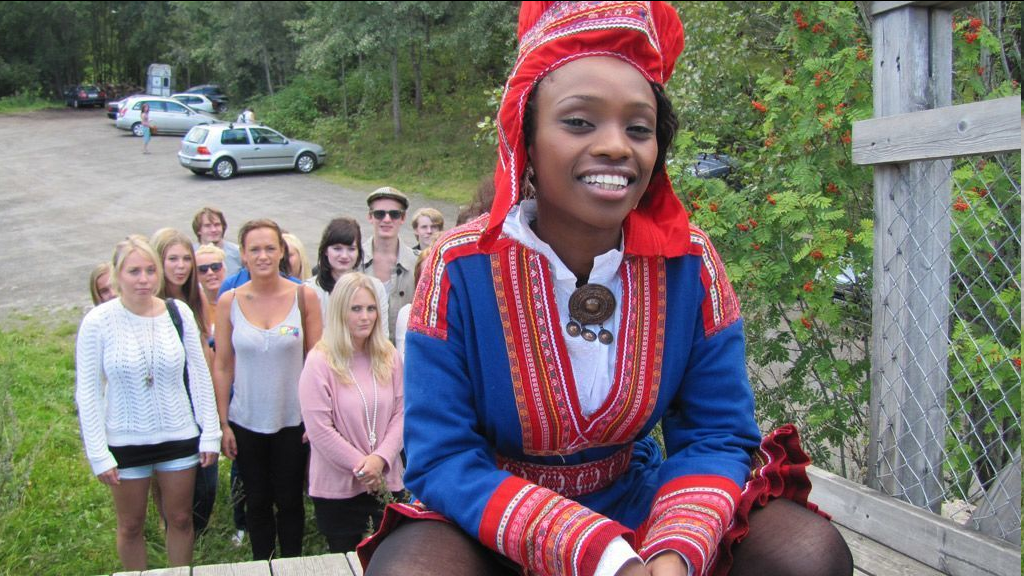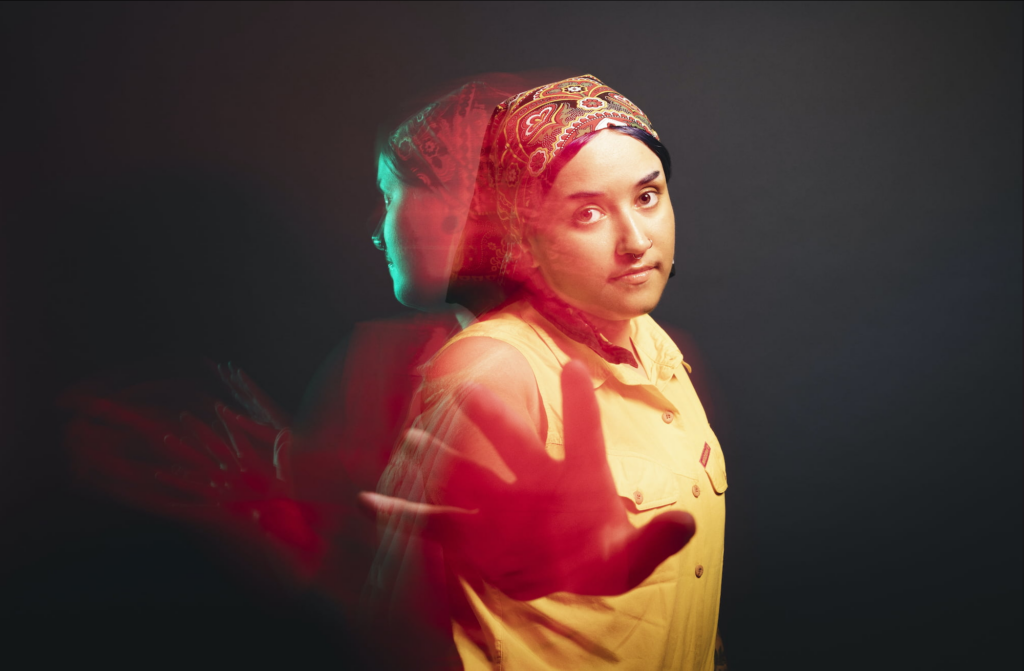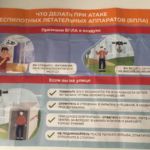Karelians as a tool of far-leftist hybrid warfare

[Free Idel-Ural movement expands information cooperation, finding like-minded persons in Europe. We received a detailed article from the representatives of “Uudenmaan akseli” movement about the parasitism of left-wing radicals in Finland on Karelian topics for manipulation purposes, deliberately discrediting the entire Finno-Ugric movement. Below are the main points.]
In the last couple weeks, article published by “Helsingin Sanomat” – “According to Maura Häkki Karelians are oppressed in Finland and it has frustrated many” has roused up lots of discussion in Social media. The Article tells about a well known so-called “Karelia activist”, her activities and her views. Newly born Karelia activism is an interesting phenomenon where Finnish greens and leftists have started blaming Finns of oppressing Karelians, using a Karelian identity that is often weak-bonded or made from whole cloth, with arguments that mimic the discussion about North-American natives. Even though historically Finnish nationalists have clearly been most concerned with the well-being of our Finno-Ugric kinship behind the Eastern border, now leftist Karelia activists are saying outrageous claims like that nationalist projects of Finns would be the main reason for the almost extinct status of the Karelian language. This is a dangerous manifestation of ethnic activism that our enemy in the East can use.
Karelians as a tool of the Far-left
Even though the connection between Finnish leftism and Finno-ugric nationalism may seem nonexistently vague, multiple members of the Left Alliance and the Green Party f.e. have now found a new way to insidiously advance their ideological agenda and encourage Finns into guilt. Even though the activists are often people whose only connection to Karelia is one evacuated great grandfather, Karelia activists often demand that they get to define Karelianess themselves. They see that anybody identifying as Karelian can call themselves Karelian and that using ethnicity as a way to definity nationality is wrong. However, if somebody who is ethnic Karelian disagrees with them, Karelia activists deny their Karelianess.
This is because their definition of being Karelian is not based on anything concrete; only feelings and the approval of other leftist Karelia activists. For them inclusivity and LGBTQ-ideology are essential parts of their Karelian identity. Karelia activism clearly has its roots in Neo-Leftism; its supporters are all leftists who have made their chosen identity an extension for their roles as victims of oppression of minorities. It can be concluded that Karelianess holds only instrumental value to Karelia activists as a way to gain victim points and advance their own political goals.
Left has practised similar tactics with the Sami people. A Finn getting inspired by anything related to Sami culture is cultural appropriation and oppression, but African in Sami folk costume is seen as progressive and a good thing. By signaling that Finno-ugric peoples are just identities anybody can join when feeling like it, leftist Karelia activists are spitting on the faces of every Finno-ugric people. It is also highly questionable that Finnish greens and leftists try to put themselves in the role of particular people just to advance their political goals and to blame the Finns for being oppressive.

The Spread of Fennophobic disinformation
Frequent claim among Karelia activists is that Finns have stolen Karelian culture. The most blatant example: According to Karelia activists, Finland’s national epic Kalevala is actually misuse and theft of Karelian culture. Finnish culture and language is in many ways similar when compared to the culture and language of our Karelian kinfolk brothers. Finnic Kindred peoples have often relied on each other during hard times and Finns have many times been fascinated by the Karelian ability to survive all possible hardships from century to another. For this reason Karelia was and is kept in high value in Finland. Finno-ugrics relying on each other is not misuse or theft and for example, the previously mentioned “Kalevala” is created as a mutual book of Finnic kinship. It was created from poetry compiled by Elias Lönnrot during his trips in the whole Grand Duchy of Finland, all the way up in the North. Lönnrot’s collection also had lots of poems from Western Finland. In many poems of “Kalevala”, you can spot the difference between West-Finnish and Karelian poems. Therefore, “Kalevala” is generally Finnic, not just Karelian or Finnish.
Karelia activists also often outrageously claim that besides stealing Karelian culture, Finns would be directly responsible for the weakened state of Karelianess, due to state-led oppression and “colonialistic” system. This is simply not true. Karelia activists also continuously prove their hypocrisy by denouncing Finnish historical nationalist projects, many of which had the sole purpose of securing the existence of Finno-ugric peoples. Kinship ideology is always part of genuine Finnish nationalism, according to which Karelians and all other Finno-ugrics are kin with us and thus fully equal to us. The original purpose of the Finnish state was to create a home for all Finno-Ugric peoples.
Like we wrote in our previous article “Justifications for Greater Finland”, the modern viewpoint about Finnishness is distorted, since Finnishness does not mean only the Finnic peoples who managed to get inside the Finnish borders. For this reason the Finnish term “suomensukuiset” (directly translated “related to Finns”) has only been in general use after the second World War since there was a need to name Finnic peoples who were left outside Finnish borders. Finland even started wars to help their kinfolk brothers and Karelians themselves asked for help from the Finnish state in the East Karelian uprising. However in the article published by “Helsingin Sanomat”, Maura Häkki says that “Finnish state is oppressing Karelians, using Finnish state keeping Kalevala in a high value as a modern day example of it. Besides that, the article mentions that with oppression refers to how Karelian evacuees were treated and that Karelian language is still not widely seen as a real language.” However, due to having a status of minority language, Karelian can be spoken freely in Finland. In a rather leftist manner however, Karelia activists argue that Finnish state is oppressing Karelians, because it is not using huge amounts of public money to support the language.

However, it is true that advancing the status of the Karelian language could help Karelians living in Russia as Finland would be a kind of safe haven for them. It is also true that Finland should have invested more in helping Finno-ugric people in history. For example, if Finland had succeeded in Kinship Wars by giving bigger contribution, freeing Karelia, Veps and Ingria when Soviet Union was still weak, genocides directed at these Finno-ugric peoples would have been avoided. However, this wouldn’t change anything with the Karelia activists because they anyway believe that the downfall of Karelianess is more a fault of the Finnish than of Russians.
Maura Häkki who was interviewed in “Helsingin Sanomat” has for example earlier stated that she believes Karelianess would have suffered even more if Finland had succeeded to gain more lands inhabited by Finno-Ugrians from the Soviet Union in the early 1900’s. Karelia would have surely changed somewhat like the rest of Finland, but Karelianess was seen as so unique and important that the Karelian way of life would not have been violated. Especially when Academic Karelia-Society with its kinship idealists would most certainly have had influence over the ruling of East Karelia.
Like Häkki brought up in the article published by “Helsingin Sanomat”, Karelia activists also argue that Karelian culture has almost disappeared as a result of Karelians assimilating in to the Finnish population and as a result of Karelian evacuees being discriminated against in the past. It’s not that simple however. It is necessary to distinguish deliberate forced assimilation from assimilation caused by the circumstances. Finnish state offered a fresh start for the Karelians by expropriating Finnish land for the evacuees. Of course, this doesn’t mean one big area, but instead small patches of land from here and there. Therefore, the communities of Karelians disappeared due to a force of circumstances as Karelian evacuees had to blend in with the local Finnish population.
It must also be noted that the Karelian population was already fractured due to the war in terms of vital conditions and living standards. When it comes to discrimination against Karelians, Karelia activists often say that the evacuees were seen as “russified” Finns. It must be noted that post-war generations unfortunately had a heavily Finlandizated view; everyone east of Finland was seen as a “ryssät.” This was an extremely beneficial narrative to the Soviet Union and is nowadays to Russia, as it took away Finns’ all interest to get involved with conditions Finno-Ugrics were subjected to inside the borders of Soviet Union and Russia.
For example, we described the situation like following: “Many people of the older generation who were in school during the time of Finlandization may think that Estonians are “rantaryssät” (directly translated to beach Russians) or think they are otherwise ethnically Slavic, which is not in any way true. It is shocking to see how systematically our people’s knowledge has been ripped out of all recollections involving our kinships: many either don’t know about the existence of our Finno-ugric kinship, think they have all gone extinct ages ago or think they are just Russians at this point. None of this is true however.” It must also be noted that in history there were some border disputes between Karelians and Savonians, but it never involved cultural oppression.
Benefitting Russian Federation
The narrative of Karelia activism however causes way more harm than just spreading disinformation. Karelia activists often forget to mention that Karelians and Finns used to be historically very close groups until the Soviet Union under Stalin intentionally worked to create division between the Finnic peoples so that the imperialistic spread of the Soviet Union would have less resistance. In the modern geopolitical situation it is necessary to wonder what the modern Left is seeking with action, where they attempt to demonize Finnish people in the eyes of our Finno-Ugric kinship brothers living in Russia, in a manner that brings unpleasant echoes from the beginning of the 1900s.
For example, an article published by Voima in 2021 “Finnish connection towards Karelia is full of exoticization and oppression: TikTok-activist Maura Häkki fights for the preservation of her people” claims that the status of Karelian language is in many ways much better in Russia than in Finland, spiced with profuse amounts of harsh anti-Finnish claims about state-sponsored oppression against Karelians. Article also mentions that magazines in Russian Federation have praised Hakki’s actions. Karelia activists never focus on the agony caused by the Russian Federation against Finno-Ugrics, instead focusing solely on Finland, gravely underestimating the actions of the Russian Federation.
Karelia activists are vigorously separating Karelians from Finns ethnically, advancing the “divide et impera” -politics practiced by the Russian Federation. Dividing the people who are potentially harmful against Russia is a very traditional Russian hybrid warfare tactic, but it’s exceptional deviousness must be noted: West and especially Finland are conscientious students of the liberal school of thought, making them flinch at just the whisper of racism or oppression – what Russia is determinedly exploiting for their gain. We got to experience the worst example of this during the aggression against Finland by the Soviets during the 1900s. The Soviet Union and the Russia following it have been using similar methods in Central and Eastern Europe from the 1940s to this day.
Maura Häkki, the activist who was interviewed in “Helsingin Sanomat” and all the other Karelia activists are right when they say that the situation with all Finno-ugrians living in Russia is very critical. However, what Karelia activists are doing is not a solution to the problem. It is unrealistic, untruthful and it only promotes leftist anti-Finnish goals, while the true oppressor of Karelians and of other Finno-ugrians is chuckling and rubbing hands on the other side of the Eastern border. In the big world, Finno-ugric peoples are closest to each other and we should be each other’s biggest safety. We must not forget our kinship brothers, but while pursuing that, we must not accidentally step into the red trap that is poison to us all.


Leave a Reply